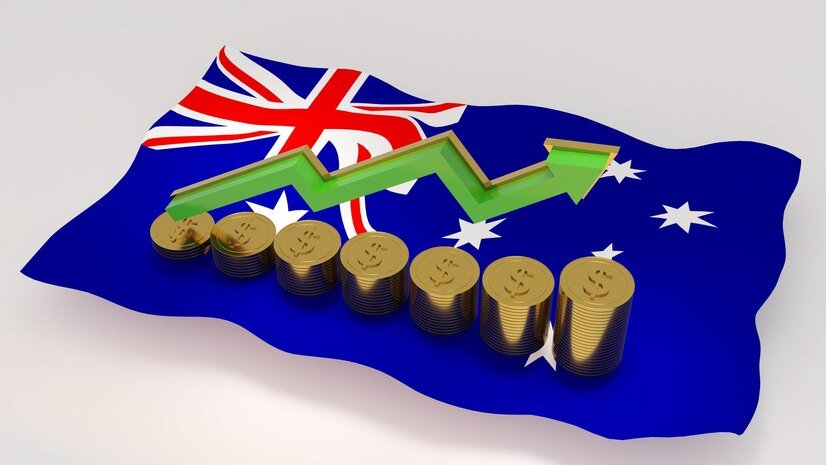Australian Dollar Strengthens Despite US Dollar’s Rise Amid Fed’s Hawkish Policy Shift. The Australian Dollar has experienced a notable rally against the US Dollar, supported by positive economic data from Australia and China. Australia’s services sector continues to show resilience, and China’s strong growth in services boosts demand for Australian exports. However, the upside potential for the AUD is capped by a resilient US Dollar, driven by the Federal Reserve’s hawkish monetary policy and persistent global geopolitical risks. These factors are headwinds for the AUD, which limits its scope for sustained appreciation in the near term.
Key Lookouts
- US Dollar remains buoyant with the Federal Reserve’s hawkish stance and continuing global geopolitical tensions supporting its strength.
- Reserve Bank of Australia now indicates a more cautious approach that will limit potential for aggressive rate hikes or gains in AUD.
- Positive growth in China’s services sector supports Australian exports, but ongoing manufacturing weakness poses risks to the outlook.
The recent release of economic data has provided some support for the Australian Dollar. The Judo Bank Australia Composite PMI for December was revised upwards, signaling modest growth in the private sector, driven by the services sector. In addition, the Caixin China Services PMI rose, further supporting demand for Australian exports. However, the US Dollar remains a major impediment, which is supported by the tight monetary policy of the Federal Reserve and by the ongoing geopolitical tensions that keep pressure on the AUD’s potential for further appreciation.

The Australian Dollar continues to rise even as the US Dollar strengthens due to the Federal Reserve’s hawkish policy shift.
• The Australian Dollar has been rallying against the US Dollar, which marks the third consecutive session of its rally.
• Economic positive news on Australia like that of the Composite PMI provided by Judo Bank Australia continues to back AUD.
• The Australian services sector also remains strong in expansion. Consistent Services PMI has maintained a growth trend in the last eleventh month.
• The rise of the Caixin China Services PMI stood at 52.2 as it signifies strength in the demand for Australian export, mainly into China.
• The Dollar persists, fueled by the Federal Reserve’s hawkish bias, and rising global uncertainties continue.
• The US Dollar Index is hovering near 109.00, which means further strength against major currencies, including the Australian Dollar.
• Positive domestic data aside, the Reserve Bank of Australia has kept its cautious outlook, limiting potential upside for the AUD.
• Geopolitical risk on the Russian-Ukrainian conflict side continues to be a safe haven destination in favor of the US Dollar.
• The AUD still shows resistance at the 14-day EMA, with a possibility to break through fundamental levels.
Mixed but relatively optimistic indicators for the economic climate in Australia are seen in the recent data releases, supporting the Australian Dollar. Judo Bank Australia Composite PMI was upgraded on Monday to 50.2 for December 2024 from the previous print of 49.9, which indicates the continuation of the marginal growth trend in the private sector, and the services sector continues to hold up. Expansion has been most pronounced in services, which for the eleventh successive month expanded at a pace indicated by the revised Services PMI of 50.8 for December from 50.5 in the previous month. Manufacturing output continues to be quite weak; this is a fact, though, which indicates that it is the services sector that continues to provide support to the economy.
Meanwhile, improvement in Australia’s largest trading partner, China, helped in the bright outlook for the AUD. Caixin China Services PMI for December 2024 is reported at 52.2, which is above estimates at 51.7, and also showed the strongest expansion of services in nearly eight months, since May 2024. It had increased from 51.5 recorded in November, showing continued improvement of the services sector in China. This would continue to remain a significant source of demand for Australia’s commodities. The jump in the Caixin Services PMI suggests that there is significant underlying demand in China, which normally is very supportive of the Australian economy.
But these figures have to be read against the background of larger global and domestic factors that could negate the prospects of the Australian Dollar continuing its momentum.
Technical Analysis
On the technical side, the AUD/USD pair still remains in a declining channel, making the short-term bearish. The pair touches immediate resistance close to the 14-day EMA at 0.6243 and likely breaks up for the upper border of the channel around 0.6300. The Relative Strength Index rose above 30, which makes a weakening in bearish momentum likely. However, until the pair manages to break above key resistance levels, the downtrend may persist, with support around the channel’s lower boundary near 0.6020.
AUD/USD Daily Price Chart

Source: TradingView, prepared by Ellyana
Forecast on support and resistance
The Australian Dollar may see additional upside if it can break above key resistance levels. A sustained move above the 14-day Exponential Moving Average (EMA) at 0.6243, followed by the 0.6300 mark, would suggest a move toward a more bullish outlook. Positive economic data from Australia and China’s strong services sector might further support this scenario, driving demand for the AUD. However, traders should monitor US Dollar strength and broader market conditions as potential obstacles to sustained gains.
Australian Dollar faces potential downside risks if it fails to break through key resistance levels. A rejection at the 14-day EMA at 0.6243 and a failure to break the 0.6300 mark will likely put pressure on the AUD once again to the downside. Global geopolitical risks coupled with the US Dollar’s ongoing strength due to the Federal Reserve’s hawkish stance will most likely send the AUD lower. The downtrend might test support near the 0.6020 region.





